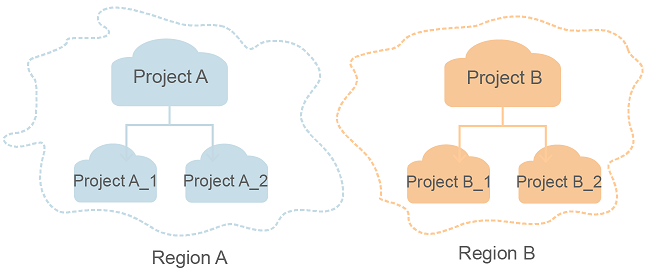Before You Start
Overview
Welcome to Elastic Volume Service API Reference. Elastic Volume Service (EVS) offers scalable block storage for server. With high reliability, high performance, and a variety of specifications, EVS disks can be used for distributed file systems, development and test environments, data warehouse applications, and high-performance computing (HPC) applications.
This document describes how to use application programming interfaces (APIs) to perform operations on EVS resource, such as creating, querying, deleting, and updating an EVS disk. For details about all supported operations, see API Overview.
Before calling an EVS API, ensure that you are familiar with the EVS concepts. For details, see section "Service Overview" in the Elastic Volume Service User Guide.
API Calling
EVS supports Representational State Transfer (REST) APIs, allowing you to call APIs using HTTPS. For details about API calling, see Calling APIs.
Endpoints
An endpoint is the request address for calling an API. Endpoints vary depending on services and regions. For the endpoint of the EVS service, see Regions and Endpoints.
Constraints
- For detailed constraints, see the constraints described in specific APIs.
Concepts
- Account
An account is created upon successful signing up. The account has full access permissions for all of its cloud services and resources. It can be used to reset user passwords and grant user permissions. The account is a payment entity, which should not be used directly to perform routine management. To ensure account security, create Identity and Access Management (IAM) users and grant them permissions for routine management.
- User
An IAM user is created by an account in IAM to use cloud services. Each IAM user has its own identity credentials (password and access keys).
API authentication requires information such as the account name, username, and password.
- Region
A region is a geographic area in which cloud resources are deployed. Availability zones (AZs) in the same region can communicate with each other over an intranet, while AZs in different regions are isolated from each other. Deploying cloud resources in different regions can better suit certain user requirements or comply with local laws or regulations.
- AZ
An AZ comprises of one or more physical data centers equipped with independent ventilation, fire, water, and electricity facilities. Computing, network, storage, and other resources in an AZ are logically divided into multiple clusters. AZs within a region are interconnected using high-speed optical fibers to allow you to build cross-AZ high-availability systems.
- Project
A project corresponds to a region. Default projects are defined to group and physically isolate resources (including computing, storage, and network resources) across regions. Users can be granted permissions in a default project to access all resources under their accounts in the region associated with the project. If you need more refined access control, create subprojects under a default project and create resources in subprojects. Then you can assign users the permissions required to access only the resources in the specific subprojects.
Figure 1 Project isolation model

API Types/Versions/Microversions
API Types
EVS APIs are classified as follows:
- APIs for EVS with customized specifications, which are also referred to as custom APIs
- OpenStack APIs that comply with OpenStack community specifications, which are also referred to as Cinder APIs
The two types of APIs offer similar functions but are used in different scenarios. Cinder APIs are used to meet open-source ecosystem requirements, while APIs for EVS with customized specifications are developed based on Cinder APIs with enhanced functions.
API Versions
EVS custom APIs provide multiple versions. For APIs offering the same functions, you are recommended to use the v2 APIs.
- Overview
- API Calling
- Endpoints
- Constraints
- Concepts
- API Types/Versions/Microversions